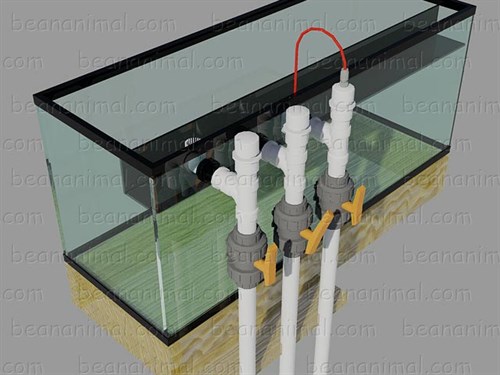puffermike
Active Member
Ok guys... I can't resist not doing an upgrade this year again and I'm going to need some solid advice.
I've never done a sump system at all. I'm a total newb when it comes to designing them. I understand the basic concept of what they do and all that jazz, I just need some hard wet facts on what I need.
My system all together will be about 180Gs of water with a 125D and a 55g sump.
The first order of business is to tell you guys the kind of 125 I actually have. It's a dual over flow.

That's the tank. I really don't know how well that style of over flow does. I'm willing to shave off those boxes and seal up the 4 holes on the bottom if... the bean style overflow is considered better.
Here is the bean style.

If anyone doesn't know about the system here are the specs...
http://www.beananimal.com/projects/silent-and-fail-safe-aquarium-overflow-system.aspx
This will be sitting in my living room, and I want it to be as quiet as possible. If you guys think the dual overflow already equipped on the tank will work just as well please do tell. I'd rather not rip the premade stuff apart. I don't think i'll be going with a refugium but I will have a spot in the tank with rubble unless you guys thinks it's really worth it. I could buy a huge skimmer instead.
So, my questions are...
1. Should I use that overflow or make a new one?
2. What kind of return pump should I purchase?
3. What type of skimmer?
I'll be grabbing that new Gyre Riptide for water movement and I've already got some LEDS picked out for the tank. I'm also interested in the reef angel and reef keeper systems for monitoring. Anyone ever use those?
I've never done a sump system at all. I'm a total newb when it comes to designing them. I understand the basic concept of what they do and all that jazz, I just need some hard wet facts on what I need.
My system all together will be about 180Gs of water with a 125D and a 55g sump.
The first order of business is to tell you guys the kind of 125 I actually have. It's a dual over flow.

That's the tank. I really don't know how well that style of over flow does. I'm willing to shave off those boxes and seal up the 4 holes on the bottom if... the bean style overflow is considered better.
Here is the bean style.

If anyone doesn't know about the system here are the specs...
http://www.beananimal.com/projects/silent-and-fail-safe-aquarium-overflow-system.aspx
This will be sitting in my living room, and I want it to be as quiet as possible. If you guys think the dual overflow already equipped on the tank will work just as well please do tell. I'd rather not rip the premade stuff apart. I don't think i'll be going with a refugium but I will have a spot in the tank with rubble unless you guys thinks it's really worth it. I could buy a huge skimmer instead.
So, my questions are...
1. Should I use that overflow or make a new one?
2. What kind of return pump should I purchase?
3. What type of skimmer?
I'll be grabbing that new Gyre Riptide for water movement and I've already got some LEDS picked out for the tank. I'm also interested in the reef angel and reef keeper systems for monitoring. Anyone ever use those?


